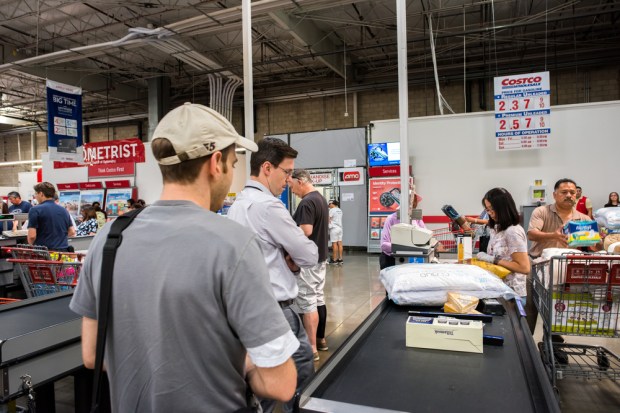Costco’s Membership Crackdown Follows Netflix’s Lead, But Will It Backfire?

Costco is taking a page from Netflix’s book, cracking down on membership sharing, but the wholesaler may be overlooking a key difference between its membership and the streaming service’s.
In an emailed statement to PYMNTS, a Costco spokesperson confirmed that the company would check members’ identities in the self-service area, asking to see the photos on people’s membership cards at self-checkout registers or if their card does not have a photo, to see photo I.D.
“Costco’s membership policy has not changed. We have always asked for membership cards at our registers at the time of checkout,” the spokesperson told PYMNTS in the email. “Our membership policy states that our membership cards are not transferable, and since expanding our self-service checkout, we’ve noticed that non-member shoppers have been using membership cards that do not belong to them.”
The move comes on the heels of Netflix’s crackdown on password sharing, which began last month. In the time since then, subscriptions have soared. In fact, one research firm found that the firm saw 200,000 new sign-ups in just two days shortly after, and average daily sign-ups to the streaming giant reached 73k during the days following the crackdown announcement.
Yet Costco is not Netflix. The crackdown may drive memberships since inflation-concerned grocery shoppers are interested in lower-priced options. Still, it could just send those consumers who had previously used others’ cards to other merchants.
Streaming giants such as Netflix each offer different content. A consumer who cannot get onto Netflix will have no access to, say, comedian John Mulaney’s latest special, and as such, that person will be left out of any conversations about that content. Consequently, if they want to be able to participate and stay in the loop, they must subscribe.
Conversely, Costco offers commodities. Perhaps a consumer may not be able to get the same deal at a non-membership retailer, but that shopper can procure similar items elsewhere. Indeed, many consumers have already changed grocery merchants in recent months, trading down in response to inflation.
Research from the May installment of PYMNTS’ Consumer Inflation Sentiment series, “Consumer Inflation Sentiment Report: Consumers Cut Back by Trading Down,” which drew from an April survey of more than 2,000 U.S. consumers, revealed that 47% of all shoppers have switched to a less expensive merchant for at least one grocery product.
Indeed, value-focused grocers and discount retailers alike are noting these gains.
For instance, Walmart, the world’s largest grocer, is seeing share gains from higher-income consumers trading down from more premium grocers in search of better bargains.
“Share gains in grocery continued, including from higher-income households, as our strong price gaps resonate with customers who are increasingly prioritizing value and convenience,” Walmart Executive Vice President and Chief Financial Officer John David Rainey told analysts on a recent earnings call.
Plus, dollar stores are reconfiguring their offerings to take advantage of the chance to gain share from other retailers amid consumers’ price anxieties. They are adding more refrigerator and freezer capacity to grow their share of food and beverage sales and expanding their frozen food selections to meet consumers’ demand for value and convenience.
Indeed, Costco’s efforts to boost memberships could send consumers running to competitors.

